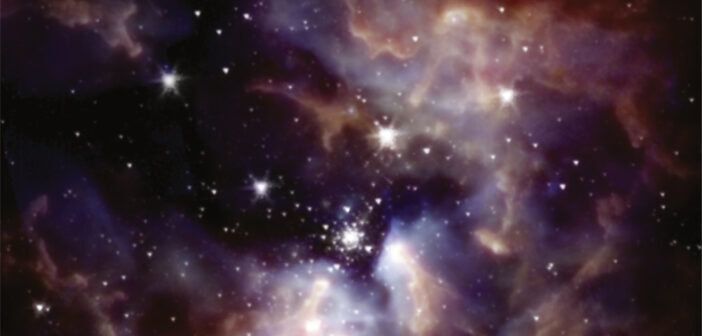The brightest giant star-forming region in the Milky Way has a new portrait, thanks to observations from a telescope flying through the stratosphere. A team led by James De Buizer (NASA Ames Research Center) paired new data from the airborne Stratospheric Observatory for Infrared Astronomy (SOFIA) with archival observations from the venerable Spitzer and Herschel infrared space telescopes to create the new image, shown above. The new observations yielded the highest-resolution data of the region at a wavelength of 25 microns (1 micron = 10-6 meter) and enabled the researchers to study star formation and search for structures around young stars. The clump of stars at the center of the image, HD 97950, is a starburst cluster that contains some of the most massive stars known. De Buizer’s team identified new massive young stellar objects, studied the dusty outflow of an evolved blue supergiant, and found several candidate high-mass proplyds: baby stars surrounded by dusty disks that are being blown away by intense radiation. To learn more about this enormous, dynamic star-forming region, be sure to check out the full article linked below.
Citation
“Surveying the Giant H II Regions of the Milky Way with SOFIA. VI. NGC 3603,” James M. De Buizer et al 2024 ApJ 963 55. doi:10.3847/1538-4357/ad19d1

